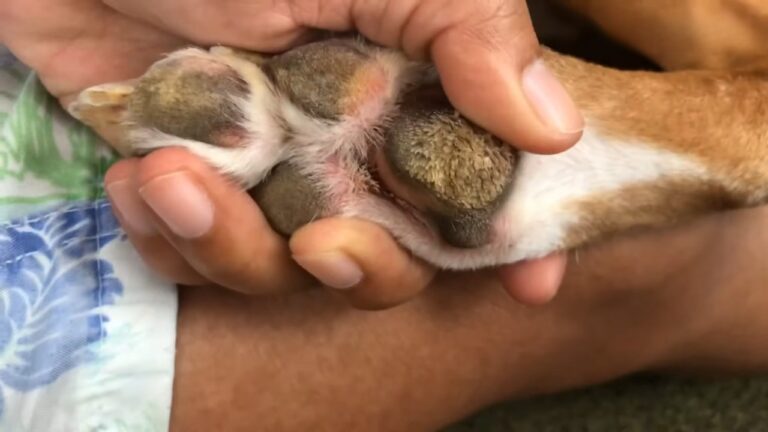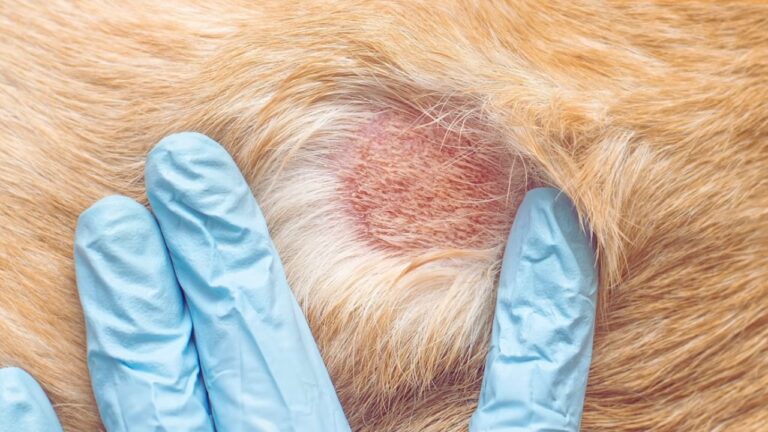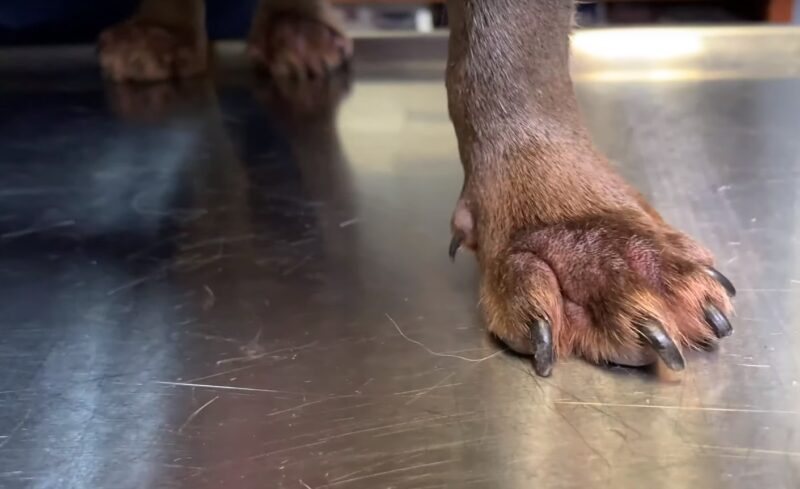Red paws are quite a common disease in dogs. It is not as problematic as some might see it, but it must be said that it should be addressed quickly.
Your little friend will be eternally grateful to you for that for the simple reason that this is an uncomfortable thing to experience.
Now, I would like to talk about what causes red paws and what are the ways to treat it.
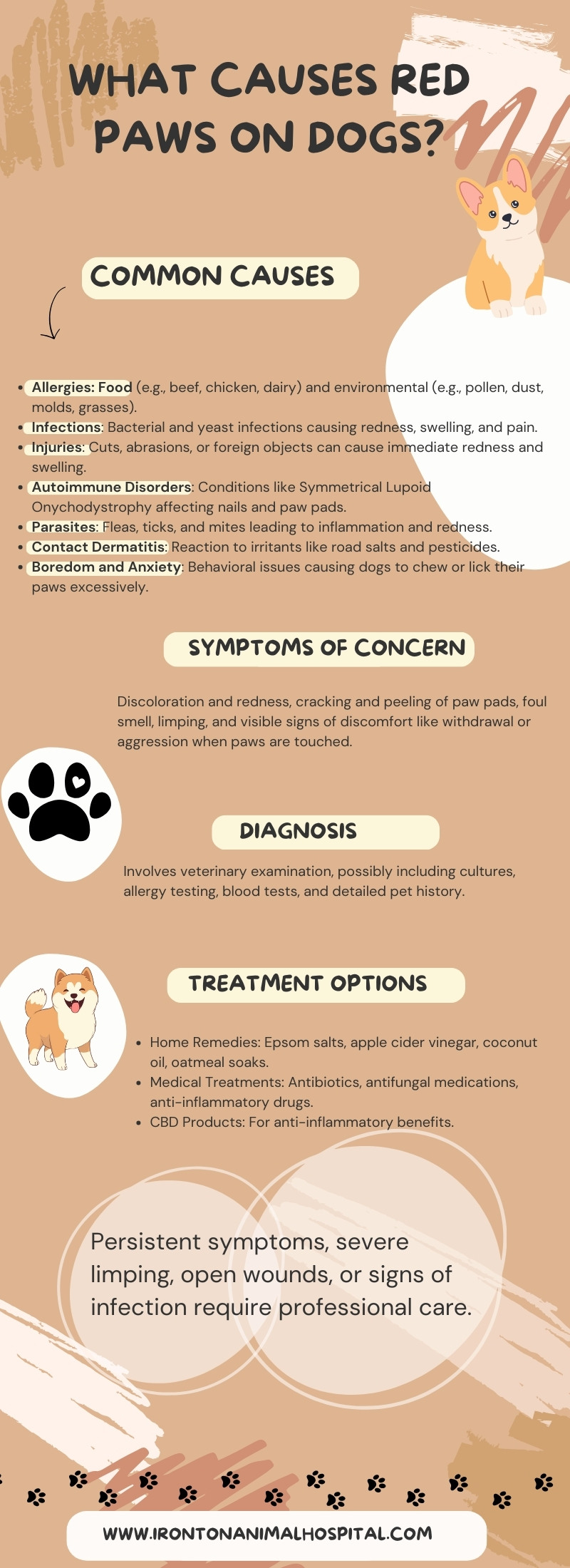
Common Causes of Red Paws
First, let us talk about the common causes of red paws. Before they can be treated, we must know what causes them, right?
Allergies
The most common cause of red paws in dogs is allergy. Practically all of them cause discomfort and inflammation. There are several types of allergens, but the main two ones are food and environmental.
Food allergies might include reactions to common protein sources like:
- Beef
- Chicken
- Dairy
Other allergies, like environmental ones, known as atopic dermatitis, can be triggered by:
- Pollen
- Dust
- Molds
- Grasses
Dogs who suffer from these issues will often have excessive redness on the pads or between their toes.
The result of that is that they will constantly chew it and lick it. It can be said that this is a direct response to itchiness caused by this issue.
Infections
Infections from bacteria or yeast also are the most important reason for purple paws in dogs. These infections can exacerbate the following:
- Redness
- Swelling
- Pain
Bacterial contamination commonly produces greater mentioned redness, regularly observed via pus or a horrific smell.
Yeast infections may present a darker red discoloration and a high-quality musty smell. These infections are frequently secondary to every other problem, including allergies or accidents, which compromise the skin’s natural defenses.
Treatment frequently involves antibiotics, antifungal medications, and topical remedies to soothe inflammation and heal the skin.
Injuries
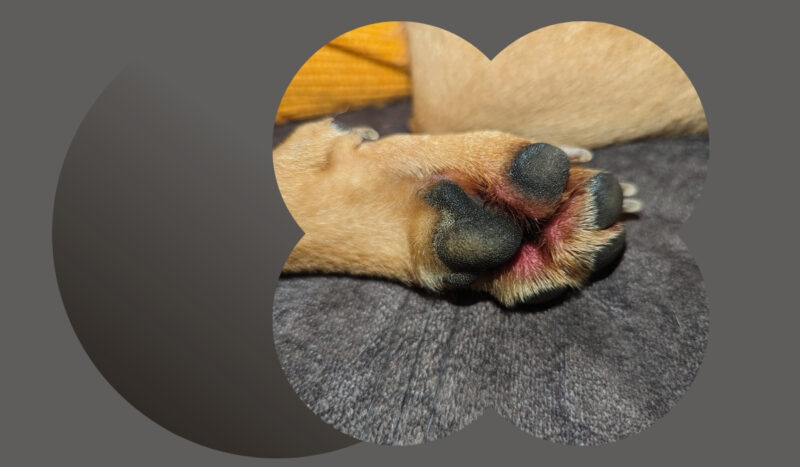
Accidents together with cuts, abrasions, or maybe the presence of overseas objects like thorns can cause immediate redness and swelling of the paws.
Such accidents are usually visible as open wounds or localized swelling. Immediate care involves cleansing the wound with a gentle antiseptic and applying a defensive bandage to prevent infection.
In cases where the damage is intense or does not improve swiftly, a veterinary visit is vital to ensure proper recuperation and to rule out deeper tissue damage or the need for stitches.
Autoimmune Disorders
Autoimmune problems like Symmetrical Lupoid Onychodystrophy (SLO) are much less common however widespread reasons for paw issues.
SLO on the whole influences the nails but can lead to paw pad troubles as nicely.
This ailment causes the dog’s immune device to attack its nail beds, mainly to brittle, cracking nails and purple, inflamed paw pads.
Treatment for autoimmune disorders commonly includes immune-suppressing pills, and in some cases, pain relief medicinal drugs, depending on the severity of the symptoms.
Parasites
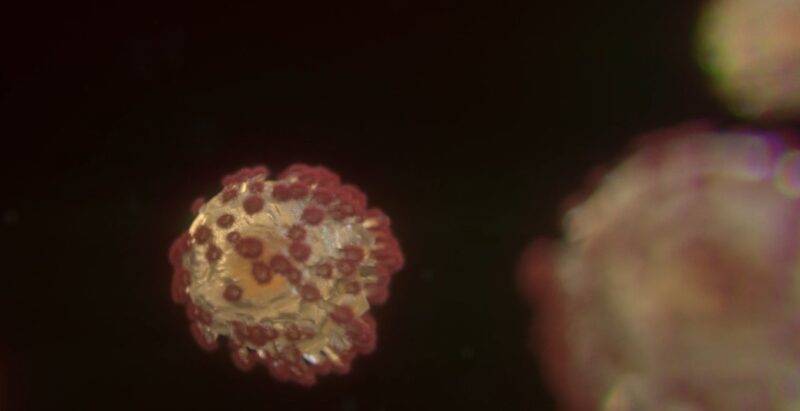
Parasites which include fleas, ticks, and mites can cause inflammation and redness in a dog’s paws.
These pests bite and feed on the canine’s pores and skin, leading to hypersensitive reactions known as flea allergic reaction dermatitis, or infection from the tick or mite itself.
Preventative measures consist of the ordinary use of anti-parasite remedies, which may be topical, oral, or collars.
Contact Dermatitis
Contact dermatitis occurs when a dog’s paws come into direct contact with irritants like road salts, pesticides, or even sure kinds of grass or carpet fibers.
The reaction can cause redness, itching, and swelling.
Identifying and removing the supply of the irritation is fundamental to remedy.
In the intervening time, washing the paws with cool water after walks and making use of protecting balms can offer relief.
Boredom and Anxiety

Behavioral issues including boredom or tension can lead puppies to excessively lick or bite their paws, leading to redness and inflammation.
This compulsive conduct now not handiest irritates the paw but can also result in infections if not addressed.
Providing adequate mental and bodily stimulation, such as interactive toys, puzzles, and regular workouts, can assist lessen these behaviors.
In chronic instances, consultation with a veterinarian or an animal behaviorist might be important to deal with underlying anxiety or stressors.
Symptoms of Concern
Recognizing the symptoms that accompany red paws is crucial for timely and effective treatment. Here are the most common ones:
| Symptom Category | Brief Description |
|---|---|
| Discoloration and Redness | Redness on paws indicating inflammation from irritants or infections. |
| Cracking and Peeling | Paw pads cracking or peeling due to dryness or infection, risk of deeper infections. |
| Foul Smell | Unpleasant odor from paws, likely from yeast or bacterial infections. |
| Limping | Limping or reluctance to walk, suggesting severe pain or deeper issues. |
| Behavioral Changes | Excessive licking or chewing of paws, potentially worsening the condition. |
| Visible Signs of Discomfort | Pain indicated by withdrawal, whining, or aggression when paws are touched, needing immediate attention. |
Diagnosis
Diagnosing the reason for red paws commonly entails an intensive veterinary examination.
The vet may additionally take samples for a subculture to discover any bacteria or fungi, perform hypersensitivity checking out, or recommend dietary modifications to rule out food-hypersensitive reactions.
Blood assessments or pores and skin scrapings are probably wanted to test for parasites or autoimmune issues.
A distinct record of the pet’s environment, habits, and previous fitness problems may even useful resource in forming a complete evaluation that leads to a correct prognosis.
Treatment Options
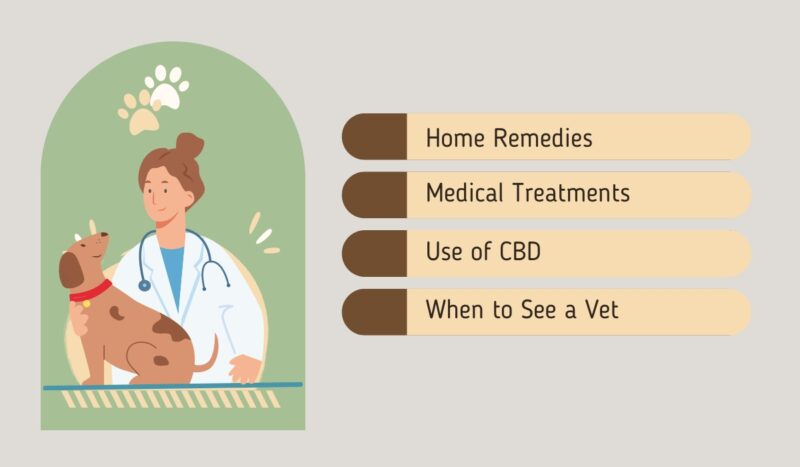
There are numerous treatment options you need to take a look at. Of course, choosing the right one depends on several factors.
But first, you should know what are the ones at your disposal.
Home Remedies
For slight cases of crimson paws, domestic remedies can offer alleviation.
Epsom salts in heated water can help soothe sore, inflamed paws, at the same time apple cider vinegar, diluted, can act as a natural antifungal and antibacterial agent.
Coconut oil and oatmeal soaks can moisturize and relieve itchiness.
It’s critical to note that domestic treatments have to no longer replace professional veterinary care, mainly, if symptoms persist or get worse.
Medical Treatments
For more severe or continual cases, medical treatments can be essential.
Antibiotics are used to deal with bacterial infections, even as antifungal medicines cope with yeast infections.
Anti-inflammatory medicinal drugs can help reduce swelling and pain.
Regular check-ups with the vet will ensure the treatments are powerful and altered as wished.
Use of CBD

CBD oil and topical CBD merchandise are gaining recognition for his or her capacity for anti-inflammatory benefits.
They can assist manage pain and decrease inflammation in purple paws.
While CBD is normally considered safe, it’s critical to use products particularly designed for pets and to discuss with a veterinarian to ensure it’s suitable to your canine’s unique fitness desires.
When to See a Vet
It’s essential to understand that a circumstance necessitates expert veterinary care.
Persistent signs and symptoms, severe limping, open wounds, or signs and symptoms of contamination are clear signs that veterinary intervention is needed.
Early intervention is vital to save you from further headaches and ensure a fast restoration.
Frequent tests also help entice capability troubles in advance then they grow to be critical, contributing to the overall fitness and well-being of the doggy.
The Bottom Line
As you can see, numerous things can cause red paws in dogs.
Fortunately, there are effective treatments for this issue.
I am certain you will find this insight to be of much help.
Related Posts:
- How to House Train an Adult Dog: Step-by-Step Guide 2024
- Are Acorns Poisonous to Dogs? - Signs of a Medical Emergency
- 10 Crucial Steps in Caring for Newborn French…
- At Home Care for a Dog Eye Stye: When Your Dog Winks
- 10 High Maintenance Needs of the French Bulldog -…
- 8 Claims of Diatomaceous Earth for Dogs That You…

